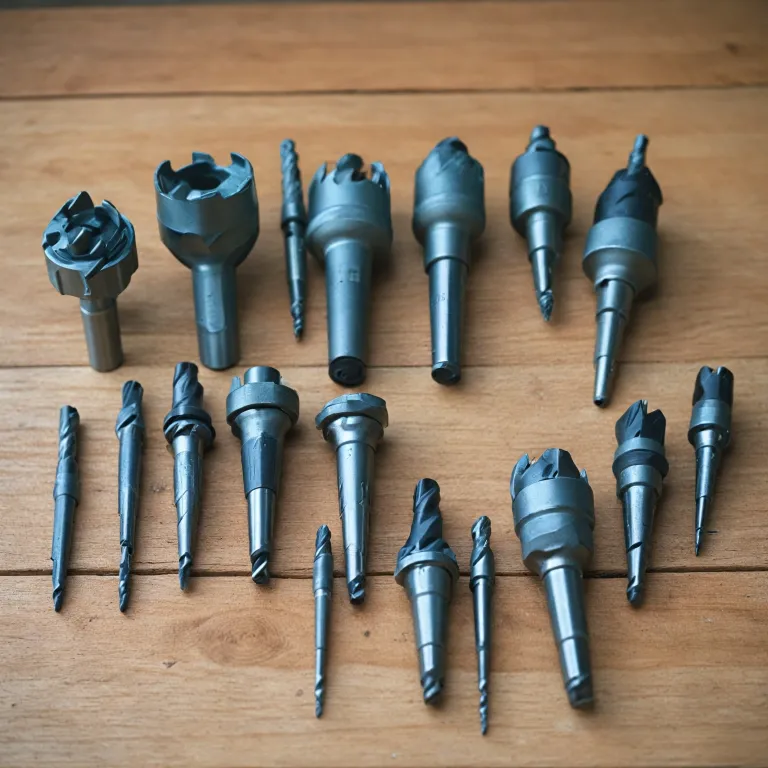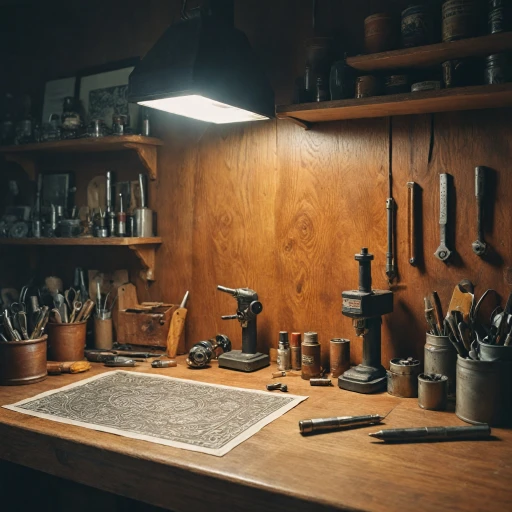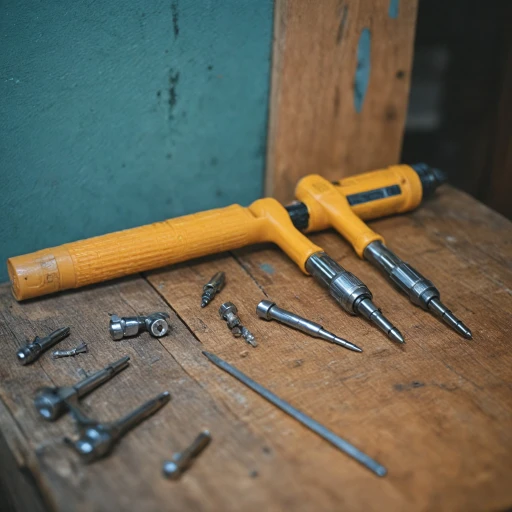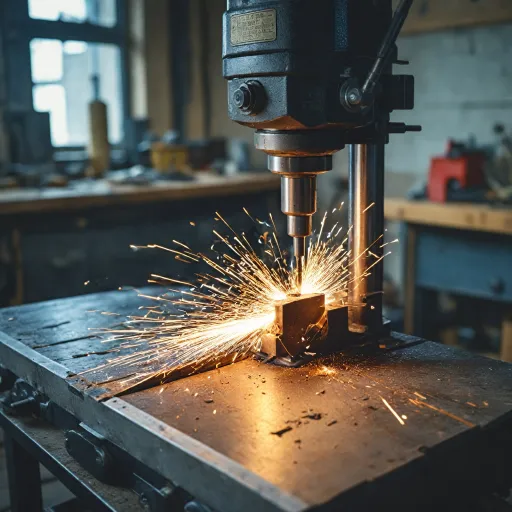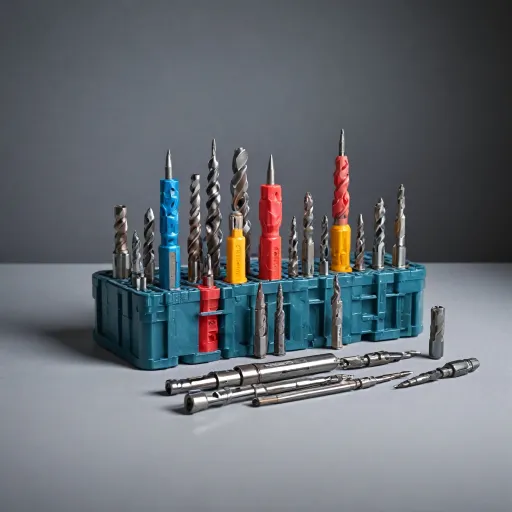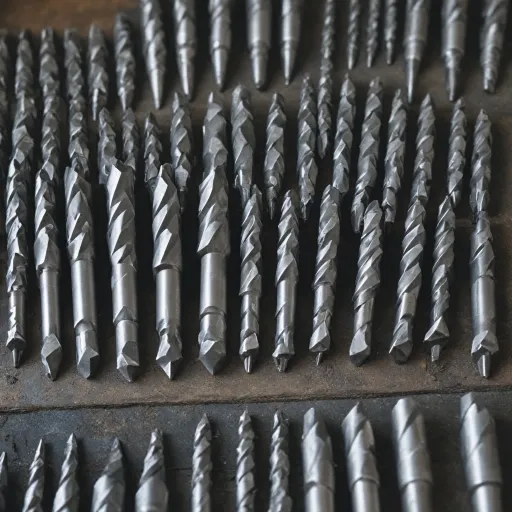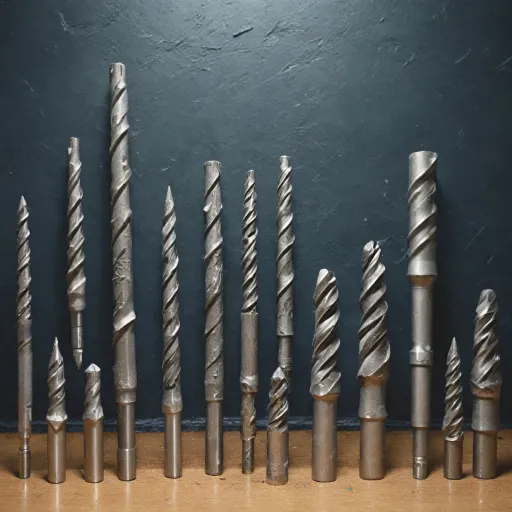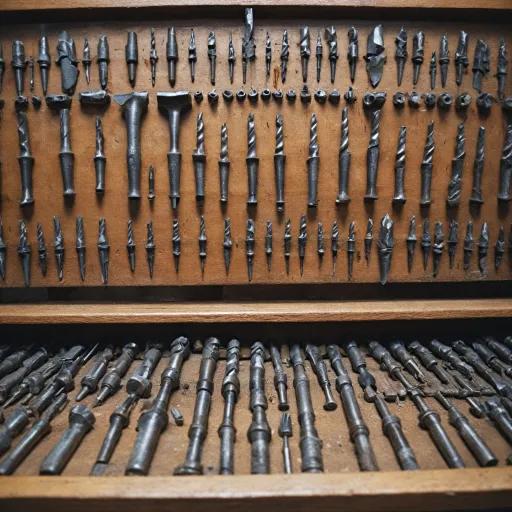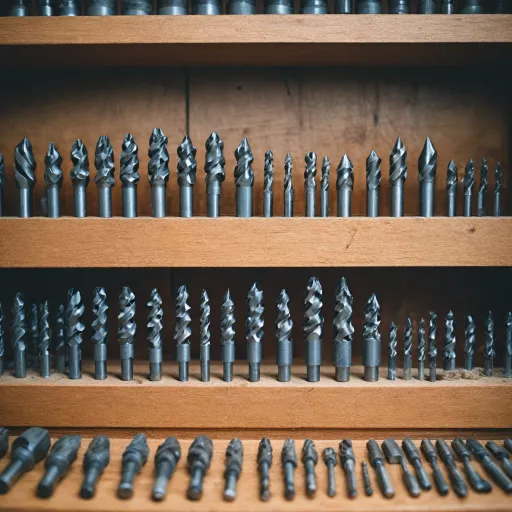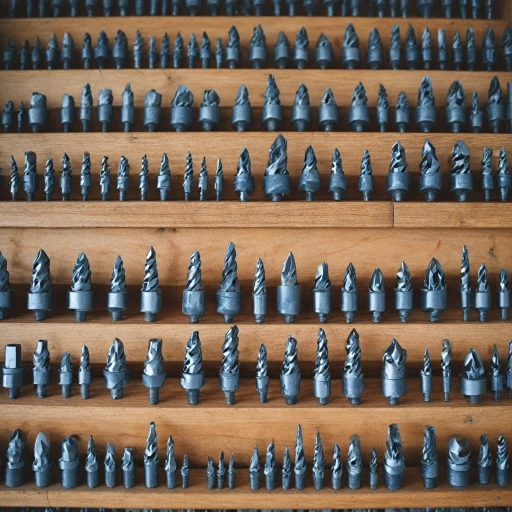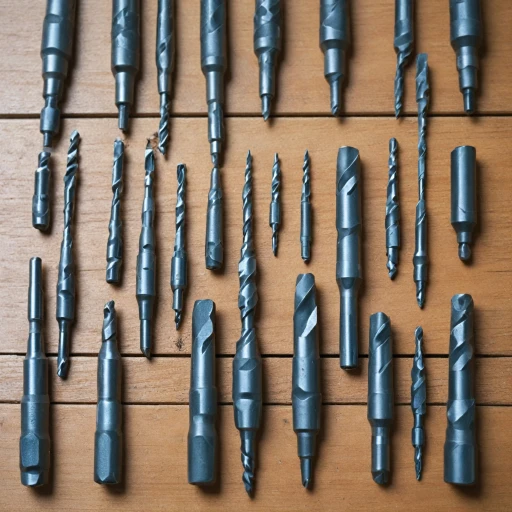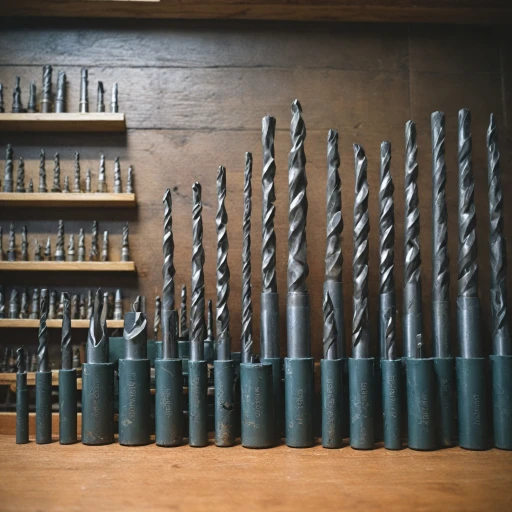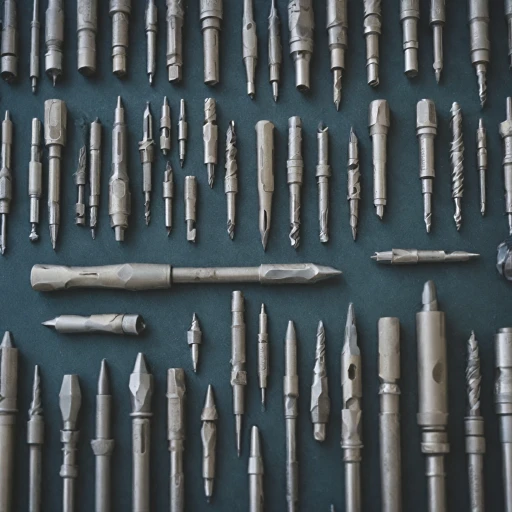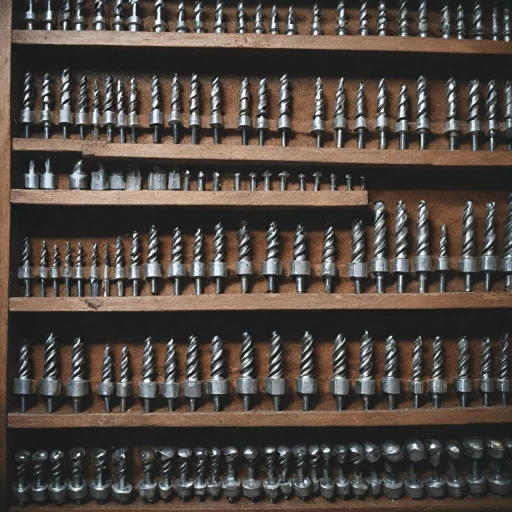
Understanding Drill Heads for Wood
Getting to Know Your Drill Heads
Diving into woodworking requires an understanding of drill bits and how they interact with wood material. Selecting the appropriate drill heads is crucial for any wood project, whether you're crafting fine furniture or exploring joinery. The way these bits cut into the wood can significantly impact the outcome of your work.
Wood-specific drill heads, such as brad point bits and forstner bits, are designed to optimize performance in wood projects. Brad point bits are noteworthy for their sharp, precise point that prevents slipping and wandering, making them ideal for sensitive woodworking tasks. Meanwhile, forstner bits excel at boring clean, flat-bottomed holes, which are often necessary for hinges and dowel joinery.
Understanding the differences among these bits not only enhances your woodworking craftsmanship but also boosts your efficiency when paired with a reliable cordless drill set. It’s important to view your bit set as a collection of items suited for various drilling tasks, ensuring you have the right tools on hand for any project requirements.
For those exploring further, it’s beneficial to familiarize yourself with understanding the right drill bit sizes to broaden your capability and precision in different environments.
Compatibility with Cordless Drill Sets
Seamless Integration with Drill Sets
Understanding the compatibility of drill heads with your cordless drill set is paramount for a successful woodworking experience. The functionality and effectiveness of the drill bits when paired with your specific drill model can significantly affect your project outcomes.
- Drill Bit Types: There are various drill bit types, such as brad point, Forstner bits, and standard bits. Each type offers unique advantages, particularly when working with wood.
- Bit Sets: Purchasing a comprehensive bit set is crucial. Such sets typically include a range of bits designed to tackle a variety of woodworking tasks, ensuring you always have the right tool for joinery, fill work, or precise edge finishes.
- Compatibility Considerations: When choosing your drill bits, ensure they are designed to fit the chuck size of your cordless drill. This is particularly important for maximizing efficiency and safety during use.
Accurately matching the bits to your drill also extends to considerations about the points and edges of the bits. For example, a brad point drill bit is ideal for reducing any timber displacement and maintaining accuracy.
Incorporating these elements into your woodworking toolkit will facilitate smoother operations and improve the quality of your creations, from fine furniture to practical wood pieces. For an elaborate guide on enhancing the longevity of your bits, you can explore how to do so with a drill bit sharpening jig.
Material Considerations for Woodworking
Choosing the Right Material for Wood Projects
When selecting drill bits for woodworking, material considerations are a crucial factor in ensuring efficient and precise results. Different types of bits are crafted from various materials to suit specific tasks and wood types, making the selection process an essential step for both hobbyists and professional woodworkers. Wood drill bits often come in high-speed steel or carbide-tipped varieties, each offering distinct advantages. High-speed steel bits are durable and can handle a wide range of softwood and hardwood projects, making them a versatile choice for many. On the other hand, carbide-tipped bits are known for their longevity and ability to withstand heat, ideal for dense hardwood and frequent use. Forstner bits are another excellent choice for woodworking, especially when you need precise, clean cuts suitable for fine furniture or creating flat-bottomed holes. These bits drill smoothly through both soft and hard woods without causing tear-out. Brad point bits should be on your radar when working with detailed joinery or any delicate tasks requiring pinpoint accuracy. The sharp point ensures a clean entry, maintaining the integrity of the wood's surface. When you consider these material features, ensuring compatibility with your cordless drill set is paramount. This involves not just the material compatibility but the process of maintaining the bits. For example, understanding "the versatility of hole drill bits" can provide further insight into choosing the right material for your specific woodworking project needs. Remember, taking time to assess the material can go a long way in improving the quality and efficiency of your woodworking endeavors.Tips for Efficient Drilling in Wood
Enhancing Drilling Efficiency in Wood
When it comes to achieving precision in woodworking projects, selecting the right drill bits is crucial. Proper usage of Forstner bits, brad point bits, and other specialized items ensures not only clean holes but also an enhanced experience with your cordless drill sets.
- Pre-drilling Preparation: Always mark the exact point where you intend to drill. This helps in maintaining accuracy and prevents the drill from slipping, especially when dealing with fine furniture and delicate wood edges.
- Optimal Speed and Pressure: Adjusting the drill's speed is vital. For wood drilling, slower speeds can help maintain control and prevent overheating, which could damage both the drill bit and the material. It's also important to apply consistent pressure to avoid splitting the wood.
- Types of Drill Bits: Using the right bit for the job is paramount. Forstner bits are ideal for creating clean, flat-bottomed holes, while brad point bits are excellent for precise entry points. Each type of bit is designed to fulfill specific roles, so it’s essential to understand their unique applications.
- Bit Maintenance: Regular checks for wear and tear on your bits are essential. Ensure they are sharp and free from rust, as dull bits can lead to ineffective drilling and damage to both the wood and the drill set.
Incorporating these techniques will not only improve the quality of your results but also extend the life of your drill bits and cordless drill set, making woodworking tasks more satisfying and effective.
Maintenance and Care of Drill Heads
Proper Handling and Storage for Longevity
To ensure that your drill bits maintain their precision and durability, it's crucial to take proper care of them. Here are some essential maintenance tips:
- Always clean drill bits immediately after use. Remove wood shavings and dust, which can affect their performance over time.
- Store bits in a designated drill bit set case to prevent them from knocking against each other, which can dull or damage their edges.
- Apply a light coat of machine oil on steel bits to prevent rusting, especially in humid environments.
- Regularly check your bits for signs of wear and tear. A dull bit requires more effort and can overheat, leading to poor results.
Sharpening and Repair Tips
Sharpening brad point bits, Forstner bits, and other types is essential for effective operation. Use a designated sharpening tool to keep the points sharp and effective. However, not all types of bits, especially those with intricate designs like Forstner bits, should be manually sharpened. In such cases, consider professional sharpening services.
Mindful Usage
Always operate your wood drill bits at the recommended speed settings for the type of wood you are drilling. Over-speeding can wear out the bits quicker and might negatively impact your woodworking project. Moreover, drilling at the correct speed ensures clean cuts and reduces the chance of burning the wood.
Best Practices for Avoiding Common Issues
- Ensure bits are tightly secured in the drill to prevent slipping or wobbling during use.
- When you experience jerky or uneven drilling, check if the bit is still sharp and aligned correctly.
- Avoid forcing the drill; let the bit do the work. This not only prolongs the life of your drill bits but also results in cleaner holes.
For detailed information on setting up your cordless drill set for optimal performance, it's important to consider the mother categories like drill sets and bit set compatibility.
Common Challenges and Solutions
Overcoming Common Drilling Challenges
When working with wood, even the most seasoned woodworkers encounter challenges. Understanding these can help you better prepare and adapt your approach. Here are some common issues and solutions to keep your projects on track:
- Splintering and Tear-Out: This is a frequent problem, especially when drilling near the edge of the wood. To minimize this, use brad point bits, which are designed to cut cleanly into wood. Additionally, placing a sacrificial piece of wood beneath your workpiece can help reduce tear-out.
- Drill Bit Slippage: When your drill bit slips, it can damage the wood surface. Ensure your drill bits are sharp and securely fastened in the chuck. Forstner bits are particularly effective for precise, clean holes without slipping.
- Overheating: Continuous drilling can cause bits to overheat, especially in dense wood. To prevent this, take breaks between drilling and use a slower drill speed. This not only protects your bits but also extends their lifespan.
- Misalignment: Accurate joinery requires precise drilling. Use a drill guide or jig to maintain alignment, ensuring your holes are straight and true.
- Inadequate Depth Control: For projects requiring specific depths, like fine furniture, use a depth stop or a piece of tape on your bit to mark the desired depth.
By taking these challenges into account and applying the right techniques, you can enhance your woodworking experience. Remember, the right drill bit set is crucial, so choose wisely based on your project needs.
